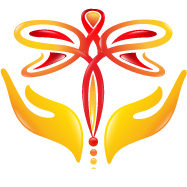What is cupping?
It uses tools, such as glass, silicone, or plastic, to create a suction effect on the muscle tissue, stimulating lymph, and blood flow. It has been used in Asia and Europe for centuries. The most common usage has been through wet cupping, where bleeding is created by cutting the skin before applying suction. Thankfully, this is not common in the US due to the high chance of infection from an open wound.
Many will say cupping is a pseudoscience only because no strong studies are proving it works. The lack of reviews is due to researchers’ inability to create a blind study, one where a certain percentage of the participants are given a placebo. This is not the researchers’ fault, but rather the nature of cupping itself. How can you create something that feels like the suction of cupping without having the same effects?
What are the benefits of cupping?
According to https://www.nccaom.org/science-of-cupping/ :
Cupping is used in over 60 countries to treat a broad spectrum of conditions such as headaches, musculoskeletal pain, infections, insect bites, hypertension, respiratory diseases, skin disorders, digestive problems, and infertility. Dr. William Osler, considered the Father of Modern Medicine and one of the founders of Johns Hopkins Hospital, recommended cupping for bronchopneumonia and acute myelitis in the early 1900s.1
And according to https://www.ncbi.nlm.nih.gov/pmc/articles/PMC6435947/ :
“can induce comfort and relaxation on a systemic level, and the resulting increase in endogenous opioid production in the brain leads to improved pain control.”
“remove toxins and waste from the body.”
“It has been claimed that cupping therapy tends to drain excess fluids and toxins, loosen adhesions and revitalize connective tissue, increase blood flow to skin and muscles, stimulate the peripheral nervous system, reduce pain, controls high blood pressure, and modulates the immune system.”
The benefits are:
- Pain reduction
- Increase in blood flow
- Increase in lymphatic flow
- Removing waste from the body
- Reducing fluid retention
- Loosening adhesions (scar tissue reduction)
- Inducing relaxation
What are the side effects of cupping?
The number one side effect is what is known as “cupping marks.” This is caused by the increased waste material from cells being pulled to the surface of the skin. These marks look like bruises. However, they are don’t present with tenderness or heat as a bruise may. They also do not change colors as a bruise does from purple to green and yellow. Instead, they get lighter over time until they fade completely.
According to https://www.sciencedirect.com/science/article/pii/S2005290117302042, adverse effects include:
“Other observed AEs are headache, pruritus, dizziness, tiredness, muscle tension, anemia, nausea, bullae formation, small hematoma or pain at cupping site, abscess formation, skin infection, insomnia, hyperpigmentation, and vasovagal attack.”
Many of these side effects are preventable when cupping is done correctly with proper communication between therapist and client. When we perform cupping here at Zen Is In The Name, we make sure that the client is as comfortable as possible by starting with light cupping and working up from there.
What contraindications are there for cupping?
According to https://www.sciencedirect.com/science/article/pii/S2005290117302042
“In general, cupping is contraindicated directly on veins, arteries, nerves, skin inflammation, any skin lesion, body orifices, eyes, lymph nodes, or varicose veins. Cupping is also contraindicated on open wounds, bone fractures, and sites of deep vein thrombosis.
Cupping therapy contraindications can be classified into absolute and relative contraindications. Until we have sufficient information regarding cupping therapy’s safety, it is contraindicated in cancer patients and those with any organ failure (renal failure, hepatic failure, and heart failure). It is also absolutely contraindicated in patients using a pacemaker and those who have hemophilia or similar conditions. Relative cupping therapy contraindications include acute infection, using anticoagulants, severe chronic disease (such as heart diseases), pregnancy, puerperium, menstruation, anemia, recent wet cupping session, recent blood donation, medical emergencies, and patient’s refusal of the procedure [42], [43], [44].”
Cupping is not for everyone; however, that is true for all types of massage and enhancements; if you are interested in trying cupping for yourself, text 480-359-7452 and ask for cupping added to your massage today.



